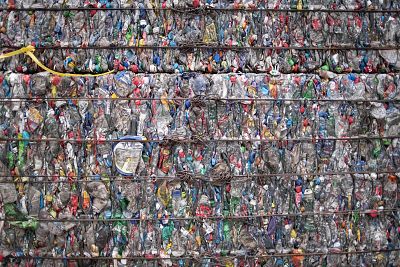"This is a wakeup call," a University of Georgia researcher said, highlighting the need for new ideas on how to handle plastic trash.
TACOMA, Washington — A global crisis over what to do with millions of tons of discarded plastic and other trash is becoming even more difficult to solve after China decided last year to stop importing much of the waste. In some cases, that means used paper and plastic containers that Americans intend to recycle are actually ending up in landfills, waste company managers say.
China has imported 45 percent of the world's plastic refuse since 1992, allowing many other countries, including the United States, to dodge the question of how to process the unwanted material, a recent study found.
But a Jan. 1 ban by the Chinese government on importing nonindustrial plastic waste, as well as stricter standards for the type of paper waste that is accepted, means much of that material now has no place to go.
"This is historic what's happened," said Steve Frank, president of Pioneer Recycling Services in Tacoma. "The rest of the world can't absorb" the waste China is no longer accepting, he added.
For more on this story, watch NBC's "Nightly News with Lester Holt" tonight at 6:30 ET
One result of China's new policies: The disposal and recycling giant Republic Services now sends 2,000 tons of recyclable paper a month to the dump.
Last week, researchers reported on the impact of China's policy changes in the journal Science Advances. The researchers studied 28 years of data from the United Nations' Comtrade database to measure exports of plastics to China, which processed much of the waste and turned it into new products. Projecting the rate of processing into the future, they estimated that, over the next dozen years, 111 million metric tons of waste will no longer find an afterlife in China.
"This is a wakeup call," said Amy Brooks, the lead author of the report and an engineering doctoral student at the University of Georgia. "Historically, we've been depending on China to take in this recycled waste, and now they are saying 'No.' That waste has to be managed, and we have to manage it properly."
Even with the world's efforts to recycle plastic — especially single-use items like bags, bottles and straws — only about 9 percent gets repurposed, while most ends up in landfills or contaminates the oceans, according to the researchers.
China first signaled that it no longer wanted to be the dumping ground for the world's synthetic garbage in 2013, when it enacted a temporary restriction and required markedly less contamination in the plastic shipments it allows into the country. The so-called Green Fence policy was a forerunner of the permanent ban that went into effect at the end of 2017, driven by China's concerns about the long-term environmental impact of its being the world's waste depot.
The updated policy that took effect this year sets much higher standards for the recyclable paper that China allows into the country. Paper waste could once have 3 percent contamination, but now it must have no more than 0.5 percent impurities, said Pete Keller, vice president for recycling and sustainability at Republic Services.
"We're making better material; we're getting paid less," Keller said. "It's a real strain on the business today."
But the University of Georgia researchers said China's new policies could have a silver lining — giving the United States and other countries increased motivation to cut plastic use and to redesign packaging and other products "so they retain their value and are more recyclable in domestic markets."
Even before the new Chinese stance, the world's oceans were becoming the repository for a huge amount of manmade waste. Estimates suggest that 4 million to 12 million metric tons of plastic is being dumped into the oceans every year.
Reinforcing the urgency of finding alternatives are viral videos and photos of whales, sea turtles and other creatures entangled in debris or ingesting plastic. The seemingly boundless reach of the pollution became clear recently when scientists released a picture of a plastic bagat the bottom of the Mariana Trench, the underwater crevasse in the eastern Pacific Ocean that is the most remote point on Earth.
The environmental engineers who wrote last week's plastics paper said nations must think differently about their waste and get better at reusing plastics. Until reuse improves, the amount of plastic that is incinerated or sent to landfills will go up, Brooks said.
U.S. consumers also face increased costs as refuse companies up their rates, because they are paying more to ship refuse to alternative countries, like India, and because they are spending more to clean and process the waste better to make it eligible for acceptance in foreign markets.
The added cost is likely to come to $2 to $4 a month, said Keller of Republic Services, and Frank of Pioneer Recycling agreed that consumers will bear the brunt.
"Ultimately, when it's all done," he said, "the homeowner is going to pay for that."












